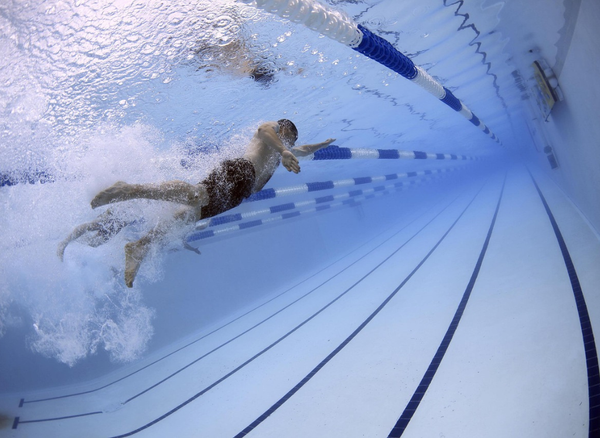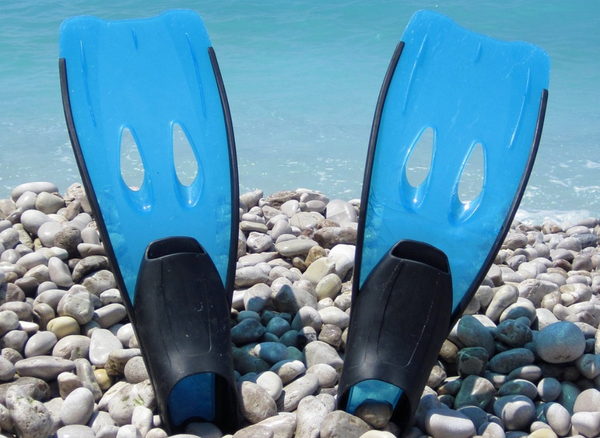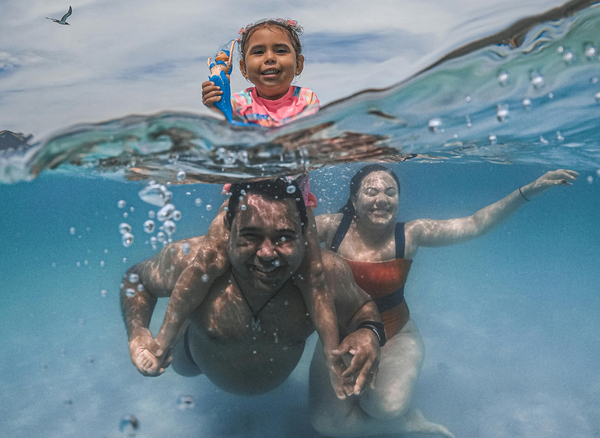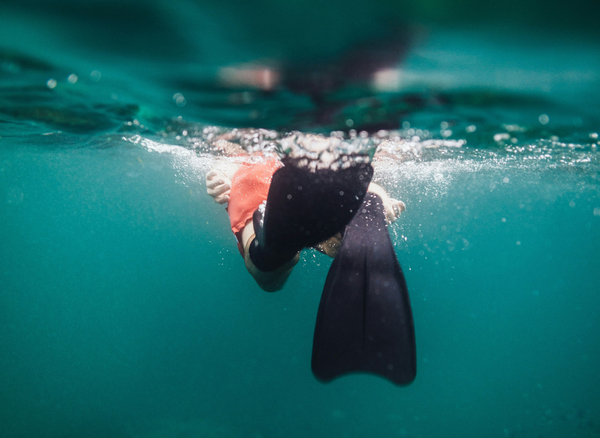Snorkeling is like peeking into a magical underwater world without the need for a scuba tank. It's an activity that combines the thrill of exploring coral reefs and other marine life with the simplicity of floating on the surface of the water. snorkeling offers a unique and accessible way to enjoy the ocean's beauty.
Imagine gliding over vibrant coral formations, swimming alongside sea turtles, and marveling at the underwater scenery. With just a snorkel tube, mask, and fins, you can embark on an unforgettable snorkeling adventure. But before you dive underwater, let's cover the basics of snorkeling.
Essential Snorkeling Gear
First things first, you need the right snorkel gear. The three main pieces of equipment are the mask, snorkel tube, and fins. The mask allows you to see clearly underwater, the snorkel tube lets you breathe while floating on the surface, and the fins help you swim efficiently.
When choosing a mask, ensure it fits snugly and creates a watertight seal. A clear mask with a prescription adjusted lens is a great idea for those with bad eyesight. The snorkel tube should have a splash guard to prevent water from entering, and a purge valve to easily clear any excess water. Full foot fins are recommended for comfort and ease of use.
Preparing for Your Snorkeling Adventure
Before you jump into the azure waters, it's important to prepare. Start by checking weather forecasts to ensure calm waters. Rough seas can make snorkeling difficult and less enjoyable. It's also wise to practice in a swimming pool if you're new to snorkeling. This helps you get comfortable with the gear and breathing technique.
Wearing a snorkeling vest or other floatation device can help you stay afloat and conserve energy. It's also a good idea to have a snorkeling buddy for safety. Having someone with you can make the experience more enjoyable and provide assistance if needed.
Mastering the Breathing Technique
Breathing through a snorkel tube might feel strange at first, but with a little practice, it becomes second nature.
Gently bite the mouthpiece of the snorkel to keep it in place, and ensure the snorkel barrel stays above the water.
If water enters the snorkel, use the purge valve to clear it by exhaling forcefully. This will push the water out of the snorkel tube. Remember to stay calm and take deep breaths to avoid panic. With practice, you'll be able to breathe underwater effortlessly.
Entering the Water
When entering the water, it's best to do so slowly and carefully. Lay flat on the surface of the water and adjust your mask and snorkel. Make sure the mask stays in place and the snorkel barrel is above the water. Start by floating and getting comfortable with the breathing technique.
Once you're ready, begin swimming slowly with your fins. Use slow, steady kicks to move through the water. Avoid rapid movements as they can stir up sediment and reduce visibility. Swimming skills are important, but snorkeling is more about floating and observing than swimming fast.
Exploring the Underwater World
Now comes the fun part – exploring the underwater world! As you float on the surface, you'll be able to see coral reefs, colorful fish, and other marine life. Take your time and enjoy the view. Snorkeling is all about relaxation and observation.
If you spot something interesting, like a school of fish or a sea turtle, swim slowly and avoid sudden movements. This will prevent scaring the marine life and allow you to get a closer look. Remember to respect the underwater environment and avoid touching coral formations or other marine life.
Equalizing Ear Pressure
As you dive underwater, you may feel pressure in your ears. This is normal and can be relieved by equalizing ear pressure. To do this, pinch your nose and gently blow through it while keeping your mouth closed. This will help balance the pressure and make your dive more comfortable.
Equalizing is especially important when diving to deeper depths. Experienced snorkelers and scuba divers know the importance of this technique to prevent discomfort and potential ear injuries. Practice equalizing in shallow waters before attempting deeper dives.
Staying Safe While Snorkeling
Safety should always be a priority when snorkeling. Always snorkel with a buddy and stay within sight of each other. This ensures that help is available if needed. Avoid snorkeling in areas with strong currents or rough seas, as these can be dangerous.
Wearing a snorkeling vest or other floatation device can help you stay afloat and conserve energy. It's also important to be aware of your surroundings and avoid touching or disturbing marine life. Respect the underwater environment and leave it as you found it.
Top Snorkeling Destinations
There are countless snorkeling destinations around the world, each offering unique underwater adventures. The Great Barrier Reef in Australia is a must-visit for its stunning coral reefs and diverse marine life. The clear waters of the Maldives are perfect for spotting whale sharks and other exotic creatures.
Hawaii's Hanauma Bay is another popular spot, known for its vibrant coral formations and abundant fish species. For those seeking cooler waters, the kelp forests of California offer a unique snorkeling experience. No matter where you go, each destination has something special to offer.
Joining a Snorkeling Tour
If you're new to snorkeling or want to explore a new location, joining a snorkeling tour is a great idea. Dive shops and tour operators offer guided snorkeling trips to some of the best spots. These tours provide all the necessary snorkeling equipment and often include a guide to point out interesting marine life.
Snorkel tours are also a great way to meet other snorkelers and share the experience. Whether you're exploring coral reefs or swimming with sea turtles, a guided tour can enhance your snorkeling adventure and ensure you don't miss any highlights.
Taking a Snorkeling Course
For those looking to improve their snorkeling skills, taking a snorkeling course can be beneficial. These courses cover everything from basic techniques to advanced skills like equalizing ear pressure and using a full face snorkel mask. They also provide valuable snorkeling tips and safety information.
Many dive shops offer snorkeling courses for beginners. These courses can help you gain confidence in the water and make your snorkeling experience more enjoyable. Plus, you'll learn from experienced instructors who can provide personalized guidance.
Using a Full Face Snorkel Mask
A full face snorkel mask is a popular choice for many snorkelers. This type of mask covers your entire face, allowing you to breathe naturally through your nose and mouth. It also provides a wider field of view and reduces the risk of water entering the mask.
Full face snorkel masks are great for beginners and those who find traditional snorkel tubes uncomfortable. They also come with a built-in snorkel barrel and splash guard, making them easy to use. Just make sure to choose a mask that fits well and creates a watertight seal.
Snorkeling with Kids
Snorkeling is a fun activity for the whole family, including kids. To ensure a safe and enjoyable experience, choose a calm and shallow snorkeling spot. Equip your kids with the right gear, including a snorkeling vest and a mask that fits properly.
Start by practicing in a swimming pool to help them get comfortable with the equipment and breathing technique. Always supervise your kids and stay within arm's reach. With a little preparation, snorkeling can be a memorable adventure for kids and adults.
Snorkeling in Cooler Waters
Snorkeling isn't limited to tropical destinations. Cooler waters offer unique underwater adventures, from kelp forests to rocky reefs. When snorkeling in cooler waters, it's important to wear a wetsuit to stay warm and comfortable.
A wetsuit provides insulation and helps you stay afloat. It also protects your skin from cold water and potential scrapes from rocks or coral. Choose a wetsuit that fits snugly and allows for easy movement. With the right gear, you can enjoy snorkeling in cooler waters just as much as in tropical locations.
Snorkeling Tips for Beginners
If you're new to snorkeling, here are some tips to help you get started. First, practice in a swimming pool to get comfortable with the gear and breathing technique. Start with shallow waters and gradually move to deeper areas as you gain confidence.
Always snorkel with a buddy and stay within sight of each other. Use slow, steady kicks to move through the water and avoid rapid movements. Take deep breaths and stay calm if water enters the snorkel. With practice and patience, you'll become an experienced snorkeler in no time.
How to snorkel FAQs
What is snorkeling?
Snorkeling is an activity where individuals swim on the surface of the water while wearing a mask and breathing through a tube called a snorkel. This allows them to observe underwater marine life without having to hold their breath or use scuba diving equipment.
What is the best snorkeling gear for beginners?
For beginners, it's important to have a well-fitting mask, a snorkel tube with a splash guard and purge valve, and comfortable full foot fins. A snorkeling vest or floatation device is also recommended for added safety.
How do I clear water from my snorkel tube?
To clear water from your snorkel tube, use the purge valve by exhaling forcefully. This will push the water out of the snorkel. If your snorkel doesn't have a purge valve, you can also blow sharply through the tube to expel the water.
Can I wear contact lenses while snorkeling?
Yes, you can wear contact lenses while snorkeling. Just be cautious if water enters your mask and keep your eyes closed to avoid losing your lenses. Alternatively, you can use a prescription adjusted mask for clear vision underwater.
Is it easy to snorkel by yourself?
Snorkeling by yourself can be a peaceful and enjoyable experience, but it's always recommended to have a buddy or guide with you for safety reasons. If you do choose to snorkel alone, make sure to follow all safety precautions and stay within your comfort level.
Summary
Snorkeling is a fantastic way to explore the underwater world and experience the beauty of coral reefs and marine life. With the right gear, proper preparation, and a few snorkeling tips, you can enjoy a safe and memorable snorkeling adventure. Whether you're snorkeling in tropical waters or cooler climates, the underwater scenery is sure to leave you in awe.
Happy snorkeling!
See you under the sea! 🐠🌊🤿








